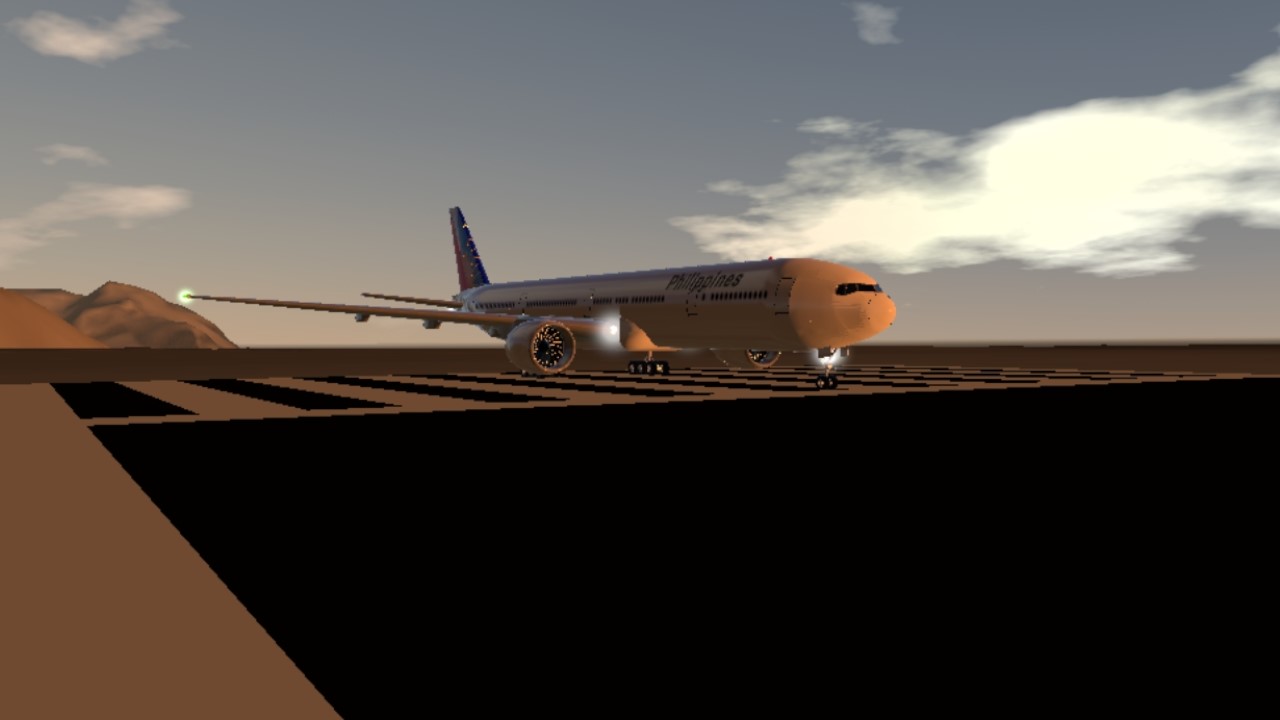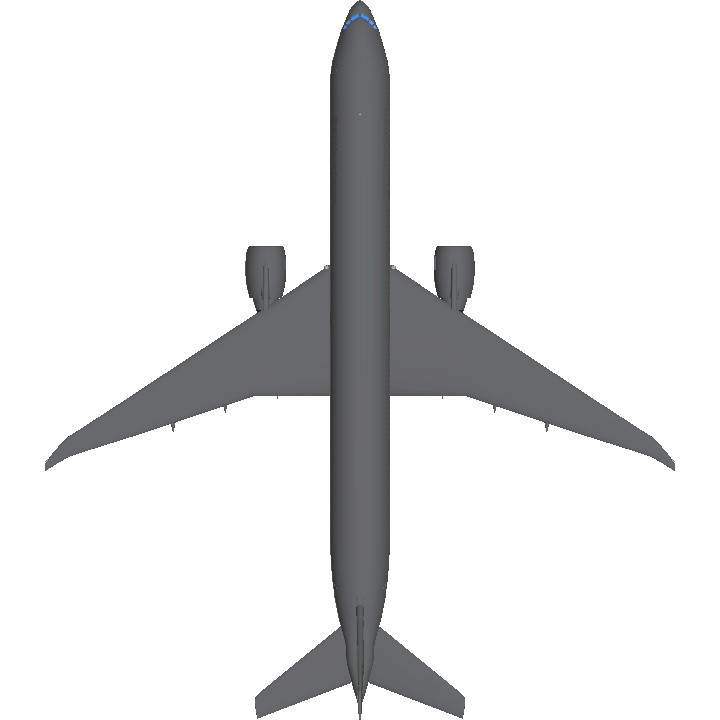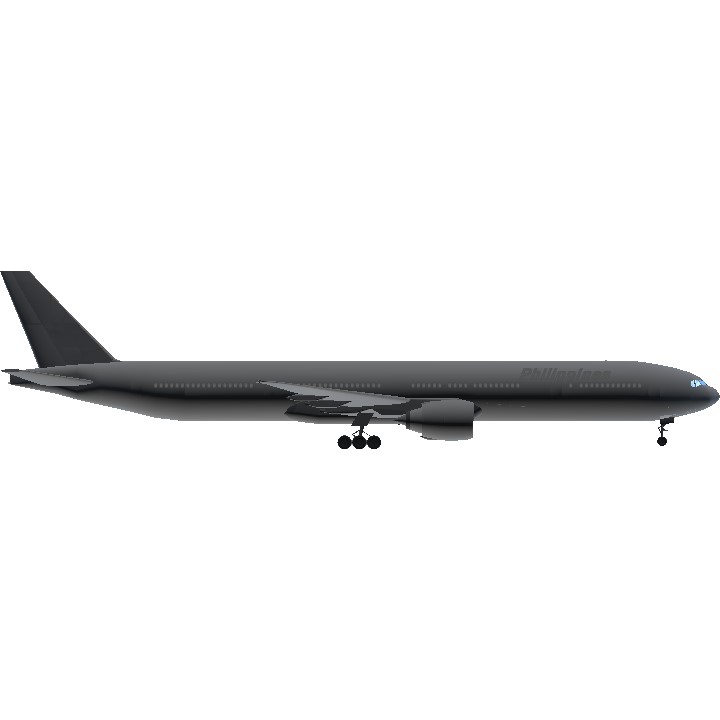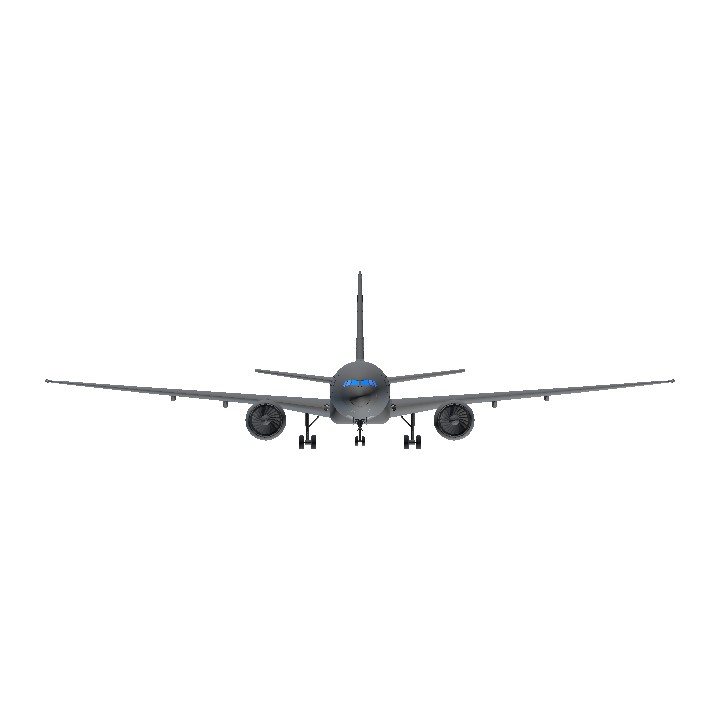Well...Im back, for a very long time now..Im sorry guys. I just dont have the courage to post new planes because im not sure if i am going to release the planes that i have made. I apologize for not posting. Thanks
And Happy new year!
About the 777-300ER
The Boeing 777, commonly referred to as the Triple Seven, is an American long-range wide-body airliner developed and manufactured by Boeing Commercial Airplanes. The 777 is the world's largest twinjet and the most-built wide-body airliner. The jetliner was designed to bridge the gap between Boeing's other wide body airplanes, the twin-engined 767 and quad-engined 747, and to replace aging DC-10 and L-1011 trijets. Developed in consultation with eight major airlines, the 777 program was launched in October 1990, with an order from United Airlines. The prototype aircraft rolled out in April 1994, and first flew in June of that year. The 777 entered service with the launch operator United Airlines in June 1995. Longer-range variants were launched in 2000, and first delivered in 2004.
The 777 can accommodate a ten–abreast seating layout and has a typical 3-class capacity of 301 to 368 passengers, with a range of 5,240 to 8,555 nautical miles [nmi] (9,700 to 15,840 km; 6,030 to 9,840 mi). The jetliner is recognizable for its large-diameter turbofan engines, raked wingtips, six wheels on each main landing gear, fully circular fuselage cross-section, and a blade-shaped tail cone. The 777 became the first Boeing airliner to use fly-by-wire controls and to apply a carbon composite structure in the tailplanes.
The original 777 with a maximum takeoff weight (MTOW) of 545,000–660,000 lb (247–299 t) was produced in two fuselage lengths: the initial 777-200 was followed by the extended-range -200ER in 1997; and the 33.25 ft (10.13 m) longer 777-300 in 1998. These have since been known as 777 Classics and were powered by 77,200–98,000 lbf (343–436 kN) General Electric GE90, Pratt & Whitney PW4000, or Rolls-Royce Trent 800 engines. The extended-range 777-300ER, with a MTOW of 700,000–775,000 lb (318–352 t), entered service in 2004, the longer-range 777-200LR in 2006, and the 777F freighter in 2009. These second-generation 777 variants have extended raked wingtips and are powered exclusively by 110,000–115,300 lbf (489–513 kN) GE90 engines. In November 2013, Boeing announced the development of the third generation 777X (variants include the 777-8, 777-9, and 777-8F), featuring composite wings with folding wingtips and General Electric GE9X engines, and slated for first deliveries in 2026.
Credits to @Loganbieu for the plane. Sorry for using it without your permission.
CHANGES:
Phillipine airlines livery
Lowered gear length
Added a jet for a better sound (doesnt multiply power that much)
Thanks.
Specifications
Spotlights
- Spaghetti76 3 months ago
General Characteristics
- Predecessor ana
- Created On Android
- Wingspan 213.4ft (65.0m)
- Length 243.5ft (74.2m)
- Height 60.4ft (18.4m)
- Empty Weight N/A
- Loaded Weight 121,789lbs (55,243kg)
Performance
- Power/Weight Ratio 0.651
- Horse Power/Weight Ratio 0.049
- Wing Loading 24.1lbs/ft2 (117.7kg/m2)
- Wing Area 5,052.3ft2 (469.4m2)
- Drag Points 16378
Parts
- Number of Parts 593
- Control Surfaces 11
- Performance Cost 3,132





What airline should i do and what plane?
@Paraguayxd700 Gracias
Está epico
Y feliz año nuevo
@Spaghetti76 Thank you
Noice!
@longanbieu Thank you
Nice